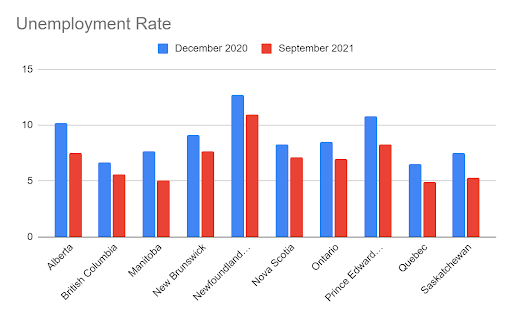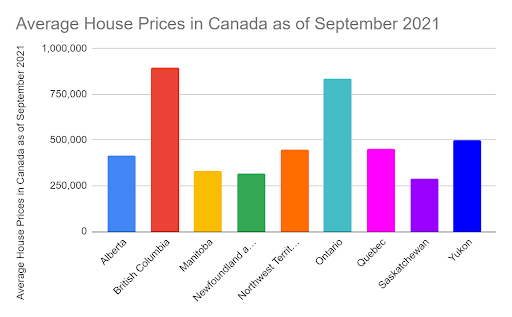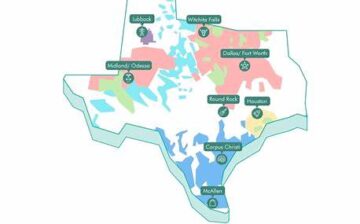
Things to Consider When Moving to Another Place
The pandemic came as a surprise and caused massive disruptions across borders. But, its lasting impact was not on the business and health sectors alone. Migration has also become a trend in many cities in Canada. As such, real estate and moving companies have seen an influx of customers in the last year.
Ontario was one of the provinces that had noticeable changes in population. Toronto lost over 50,000 residents who moved to neighboring cities like Oshawa. Economic conditions and the pandemic’s emotional toll were their primary reasons. But for some, their choice turned out to be a huge white elephant.
With that, here are the things to consider before moving out of your home.
Availability of Jobs
It is a must to know if the place you want to live in has adequate job offerings. Also, know the average wage or salary and compare it to your costs. Is moving out to another place worth it? Do you get to earn and save more?
One way to figure this out is through the unemployment rate. You may compare it on a year-to-year or province-to-province basis. Mass lockdowns have caused a 66% increase in the unemployment rate from 5.73% in 2019. About 50% of businesses closed in the first three months of the pandemic.
Earlier this year, about 200,000 domestic businesses were planning to shut down for good. Most of them were part of the hard-hit industries, such as restaurants and retail stores. Government assistance could not cushion them from revenue decline and net losses. The apprehension of Canadians and the emergence of online stores did not help them.
As of August 2021, individuals employed increased by 90,000. As such, the unemployment rate decreased to 7.1%. The unemployment rate is an essential macroeconomic indicator. It tells you about the availability of jobs and the competition among job seekers.
In reality, high unemployment can lead to a scarcity of jobs. It is because more people are in the pool of unemployed. Either many were laid off, or they decided to leave their jobs. But, both of these can lead to lower salaries since the supply of labor is higher than usual.
Take from Newfoundland and Labrador Statistics
Social Services
Before you head to another location, assess the social services offered. You may want to know the quantity and quality of these services. These include medical, dental, education, and other financial help.
You can also check if the government provides subsidies or assistance for low-income families. Provinces like Ontario provide child support and spousal support for single parents. They also have income and employment assistance for persons with disabilities (PWDs). The government must promote inclusion, especially in times of crisis.
Cultural Differences
Provinces have different demographics and cultures. When you move to a new area, you will likely notice other social practices and ways of living. Familiarize yourself with the laws and behavioral patterns in your new province. With that, you must consider whether you can adjust to a new lifestyle or not.
Fortunately, there are other more important factors to consider. Also, you may seek help from interprovincial movers. They will assist you in the mundane parts of your relocation process. They can help you get acquainted with the fundamental aspects of living in a new province.
Housing Options
When you move across to another province, you have two options. It is either you buy a house or rent. Yet, the pandemic has upended traditional migration patterns. The economic conditions and infection rate in an area were the primary factors.
Buying a House
In 2020, the Bank of Canada set the interest rates to almost zero to cope with the recession. The rates remain stable, although they may go back to the pre-pandemic level soon. Likewise, mortgage rates dropped whether insured or not. On average, the decrease amounted to 22%. The largest cut of 72% was seen in uninsured houses with variable rates.
Meanwhile, house prices, in general, decreased by 11% from March to April. The lower rates enticed more house buyers. But during the second half, prices bounced back and surpassed the pre-pandemic level. From $488,000, the average price rose by 24% and reached $607,000 in December 2020.
The surge continued and increased by 17% in 1Q 2021. The funny thing was that the trend since the second half of 2020 had broken the law of demand. Despite the price increase, the number of transactions more than tripled in less than a year. Indeed, the mortgage rate influenced the buying pattern in the last year.
Now, house prices are more stable and moving in a slightly downward direction. In August 2021, the average sold price was $664,000, 24% higher than in February 2020. Prices may not go back to the pre-pandemic level soon. Now, the mortgage rate is 2.98% on average, while real estate transactions are decreasing.
When buying a house, both the price and mortgage rates should be considered. Once the economy recovers, interest rates and mortgage rates may increase.
Renting a House or a Room
Rentals also plunged during the peak of the pandemic. In the early part of 2021, rentals remained stable but were gradually increasing. Now, the rates in some cities are skyrocketing and going back to the pre-pandemic level. For example, Toronto luxury apartments rose from $2,795 in January to $3,350 in July. Other apartment types are increasing as well. A single-bedroom apartment is set at $1,800 compared to $1,650 in 2020.
Cost of Moving
Another factor to consider is the cost of moving to your new home. You may hire the services of a moving company. Their prices may vary depending on the location or destination. But, most companies charge based on hourly rates. As such, you must check the rates of moving companies near your current location. You may also rent a moving truck for your DIY move. You may have to spend on new documents and licenses as well.
Cost of Living
Aside from employment and house prices, you must consider the cost of living. It includes the prices of goods and services in the area. If your office is far from your home, you have to know how much you will spend commuting. But if you have a car, the price of gasoline is your concern. Also, taxes are different in every province.
Once you have accounted for all the costs, compare them to your current location. Given the salary you will get, are costs relatively lower? Can you save more? If not, you better think twice before pushing through with your plan.
Buy Home and Car Insurance
Having home and dui car insurance is a must wherever you are. Canada is a vast country. As such, climates may vary in provinces. Criminal cases are not the same. Chances are, the province is more prone to extreme weather conditions.
You must protect your properties like houses and cars. Preparation may not suffice, but home and car insurance can guarantee financial protection. Home and car shipping insurance are different in every province. But in general, it can cover properties from natural disasters and accidents.
Moving to a new place can be both exciting and challenging. The new normal is not the setup we are accustomed to. With that, you must have a keen eye on the costs and opportunities in a province. Considering the important factors and making proper preparations will help in your decision.
Here we present more tips and advice for those planning their move: Most Common Moving Mistakes
Have Experience in the Moving Industry? Want an Additional Income Stream? Work With All Around Moving!
Adding a new revenue stream to your company is a great method to increase earnings in the moving industry. Every step of the journey, we’ll be there for you Click here to learn more.







